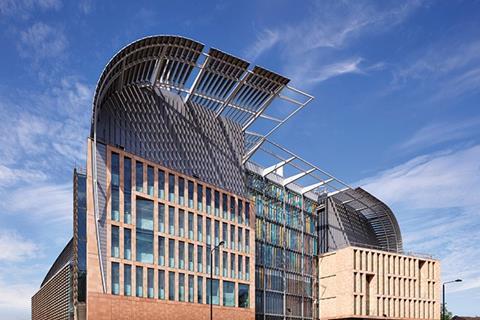HOK stays in red for second year running
The international arm of Francis Crick Institute architect HOK turned in another loss last year with the firm blaming bad debts, rent hikes and salary increases for remaining in the red.
In its accounts for the year to 25 December 2015, HOK International saw it increase pre-tax losses from £455,000 to £463,000 – although turnover was up 5% to £22 million. Its operating loss was up 11% to £443,000.
Finance director Andrew Childs said HOK was hit by a bad debt charge of £225,000 for a scheme in Turkey and also had to shoulder a rent hike of £94,000 at its London office. It also racked up £246,000 in foreign exchange losses while its salary bill went up £340,000.
Overall admin expenses went up just over £1 million to £10.3 million which offset a rise in gross profit. Childs said it was “unfortunate and disappointing that the improvements in turnover and gross profit margin did not materialise in an improvement in operating result”.
Turnover in the UK slipped 13% to £10.7 million – meaning the country’s share of revenue was below the 50% mark – as its work on the Crick in north London and Barts Hospital in the City finished but workloads across Europe, where it has won a high-profile contract to design a new basketball arena for FC Barcelona (pictured), nearly doubled. Revenue from the rest of the world was up nearly a quarter to £9.5 million.

The firm, which is bidding for the chance to carry out work on the planned £4 billion revamp of the Palace of Westminster, recently won a scheme to design new campus buildings for a new university complex being built in Kuwait. And it is also designing a new research hub at Glasgow university.
Childs added: “The year ended with more contracted work than at the preceding statement of financial position date for the second year running.”
The number of staff at the business edged up to 164 from 156 while the salary of the highest-paid director, who is not named, went up a third to £271,000.




























No comments yet